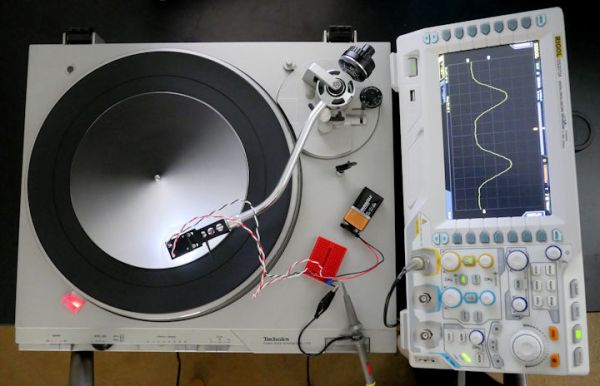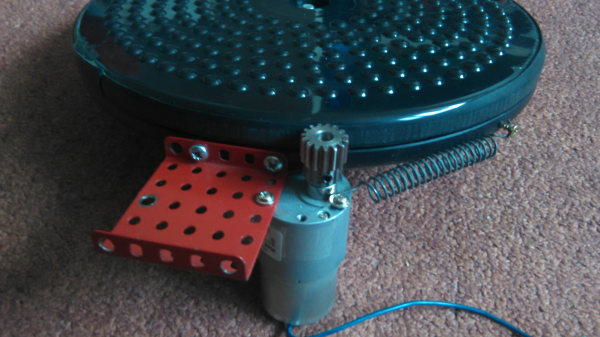Whether you’re selling a product or just showing off your latest project, a photo turntable makes video shots a lot easier. 360° turntables allow the viewer to see every side of the object being photographed, while the camera stays locked down. Motorized turntables are available as commercial products costing anywhere from $30 to $150 or so. Rather than shell out cash, [NotionSunday] decided to create his own turntable using a few parts he had on hand and 3D printing everything else.
The motor for the turntable came from the eject mechanism of an old DVD-ROM drive. An Arduino Pro Mini controls the motor’s speed using an MX1508 H-bridge chip. Power comes from an 18650 Li-Ion battery. The whole assembly spins on the head assembly from a VCR.
Before you jump in on the comments, yes, VCR heads have motors. However, they’re typically brushless motors rated for 1,800 RPM. Running a motor like that at low-speed would mean rewinding the coils. In this case, using a DC motor and gear drive was the easier option.
[NotionSunday] 3D printed the turntable base and mount. The mount uses a magnet arrangement that makes it easy to switch between freewheeling or belt driven operation. The turntable itself is posterboard, with 3D printed edges.
Click through the break to see the whole video.
Continue reading “$8 3D Printed Photo Turntable Uses Upcycled Parts”

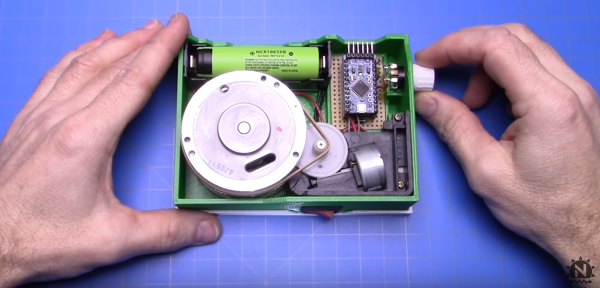
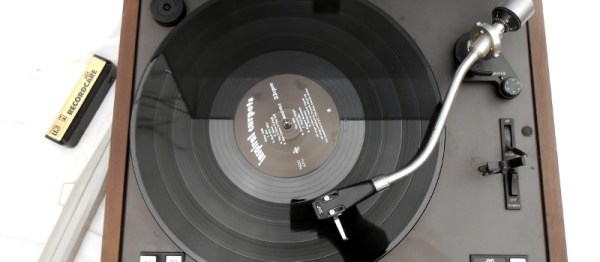
![The legendary Technics SL1200 direct-drive turntable, as used by countless DJs. Dydric [CC BY-SA 2.5)], via Wikimedia Commons.](https://hackaday.com/wp-content/uploads/2017/02/640px-technics_sl-1200mk2-2.jpg?w=400)

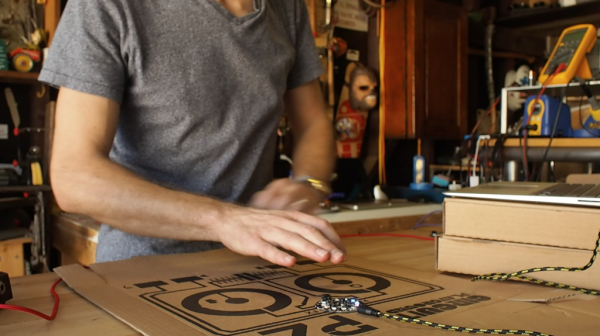

 The platter is machined from a piece of rosewood, weighted and balanced with lead shot, and laminated between two sheets of brass. It sits on a bearing aided by a ring of opposing magnets, and is belt driven by a two-phase induction motor. The base of the turntable is cast as a single piece of concrete, the idea being that the extra weight will aid the damping of vibrations. The tonearm is machined from a piece of wood, and its pivot from brass. The tonearm bearing is a ballpoint pen, a surprising yet inspired choice .
The platter is machined from a piece of rosewood, weighted and balanced with lead shot, and laminated between two sheets of brass. It sits on a bearing aided by a ring of opposing magnets, and is belt driven by a two-phase induction motor. The base of the turntable is cast as a single piece of concrete, the idea being that the extra weight will aid the damping of vibrations. The tonearm is machined from a piece of wood, and its pivot from brass. The tonearm bearing is a ballpoint pen, a surprising yet inspired choice .